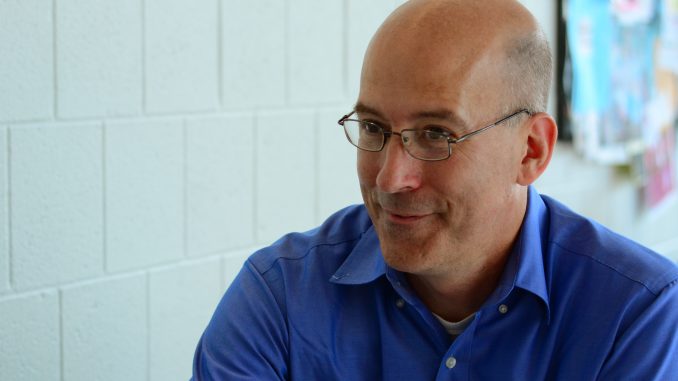
The educational potential of video games is currently being discovered and built into Temple’s curriculum—much like the way players build and add to structures in the crafting video game Minecraft.
Matt Palladinetti, and Rick Moffat, director of academic computing and technical support manager at Computer Services, respectively, are working on implementing a school-ready server for Minecraft at Temple, called MinecraftEdu. It’s goal is to help build curriculum for various subjects and increase the students’ enthusiasm and study efficiency.
Minecraft enables gamers to creatively build with LEGO-like blocks, and also explore the world while engaging monsters in combat. It has been used by schools all over the world to teach students history by having them recreate historical landmarks, basic computer science through Minecraft coding camps and more.
“Minecraft is interesting because not only can you design what you want, but people can also modify the game,” Moffat said. “So in addition to people developing all sorts of fantasy-related mods for Minecraft, educators started developing programming mods, chemistry mods, physics mods … all the things that fit into ways to teach.”
Temple’s Minecraft server is where educators can share their interests in the game and the method they have used to teach students via Minecraft.
The server was recently used by Linda Greenwood, a doctoral candidate in the mass media and communication program, to recreate the U.S. Capitol for a doctoral research project.
Prior to the server’s creation, a faculty committee from the School of Media and Communication met for a couple of years to examine how games might be used for education.
In 2010, Moffat discussed the possibility with Catherine Schifter, an associate professor from the Social Support Center in the College of Education, who is also interested in gaming and education. The idea of using Minecraft as a platform for teaching started to grow from there.
“As soon as we had that server uploaded, educators could gather and build a community of people who are interested about what they are doing and see how it affects education,” Moffat said. “Temple has been very supportive—they provided us two virtual servers where we could host events and do the testing and researches. They really gave us time to try something new.”
Last January, the College of Education offered a web-based course called “Learning about Learning through Video Games,” and the MinecraftEdu server was used throughout the week as part of the coursework.
Jay Imbrenda, who taught the course, found there was great potential with the server to explore further.
“Temple’s Minecraft server played an instrumental role as both a space where we could gain first-hand experience with some of the design principles we examined, as well as an arena in which the social dimension of our course could play out,” Imbrenda said. “It was a really fun and exciting experience to get the class together in a virtual playground and just sit back and see how the dynamic among us evolved on its own.”
For Moffat, one of the obstacles in integrating Minecraft into the university is it’s harder to build a curriculum around subject knowledge that requires more focused tools than the game provides.
Temple’s Minecraft server is currently only open for faculty, but Moffat would love to support students in joining the server. In the future, Moffat hopes Temple hosts more events related to educational games and gains more opportunities to partner with game developers and companies.
Sylvia Dao can be reached at van.thuy.dao@temple.edu



Be the first to comment